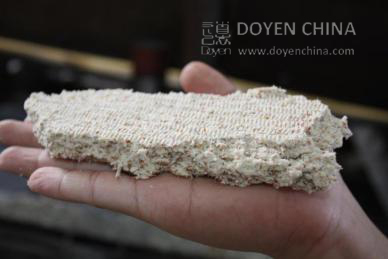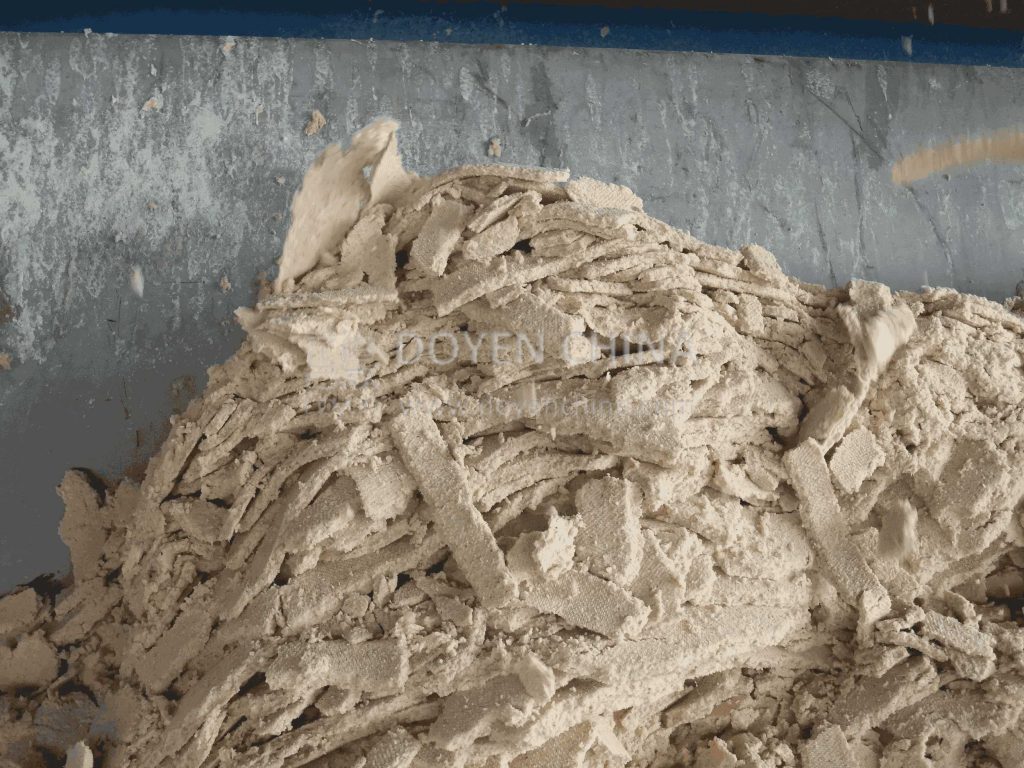

Tel:
+86-757-8633-0278
Email:doyen@doyenchina.com
Fax:+86-757-86287390
Address:Room 201, Building No. 24, Yicui Rose Garden, No. 2, Jihua 7 Road, Chancheng District, Foshan City, Guangdong Province, China 528000.
1、 The present situation of cassava residue and the practical significance of biological fermentation technology
With the rapid development of grain and oil processing, light industry and food fermentation and other industries in China, there are a large number of processing by-products and fermentation by-products, such as cassava dregs, corn alcohol dregs (DDGS), distiller’s grains, sauce dregs, vinegar dregs, fruit dregs, monosodium glutamate dregs, yeast protein and so on. The industrial utilization of these resources will produce a large number of feed raw materials, but also solve the increasingly serious environmental pollution problem 。 Cassava dregs are the leftovers after the separation of cassava starch, accounting for about 75% of the weight of fresh potatoes. There are many enterprises in Wuming County, Guangxi province that carry out this kind of processing, and a large number of cassava dregs are produced every year. Through the application of new high-efficiency and low-cost microbial fermentation technology and drying technology, it will play a certain role in promoting the development of residue feed resources.
2、 Technical route of cassava residue bio fermentation and its application in livestock and poultry production
Cellulose is a kind of linear macromolecular substance which is connected by β – 1,4-glucoside bond. On the main chain, each glucose residue rotates 180 ° with its neighbor. The degree of polymerization of plant cellulose is about 14000; the degree of polymerization of microbial cellulose is about 3500
The polymerization degree of commercial cellulose is between 50 and 5000.
In general, cassava residue has a high content of cellulose, and cellulose can not be absorbed by single stomach animals, so its utilization is greatly limited; and the fermentation of conventional strains is difficult to achieve the purpose of degradation of cellulose. Scientific research has proved that only through the fermentation of special flora, can cellulose, hemicellulose, lignin, pectin and other nutrients be transformed into feed resources available for livestock and poultry breeding as much as possible
(1) Screening and optimization of strains: strains that can degrade cellulose in cassava dregs were screened out from bacteria and fungi; after physical and chemical mutagenesis, strains with high cellulase production were screened out as fermentation strains. The gene engineering strains of high activity cellulose endonuclease, cellulose exonuclease and β – glucosidase were constructed.
(2) Study on culture medium and fermentation conditions: study and determine the other ingredients and addition amount in the culture medium except cassava residue; study and determine the best fermentation conditions such as inoculation amount, fermentation temperature, fermentation time and ventilation.


3、 Technical indicators
The cassava dregs were transformed into the raw material substitutes of animal feed by using biological fermentation technology (the proportion of replaceable corn was 20-25%). Many indexes of cassava dregs were the same as that of corn, and the mineral, vitamin and amino acid parts were higher than those of corn. After biological fermentation, the content of nutrients in cassava dregs is greatly increased, and its utilization rate is also greatly improved; moreover, it contains a large number of probiotics, which can improve the production performance of animals and feed returns, and reduce the use of antibiotics.
Assessment and evaluation indexes of cassava residue before and after bio fermentation
Index nutrient comparison value before treatment and after treatment
synergism
Index energy MCAL / kg 1.98 3.32 increased by 67.68%
Crude protein% 4.95 12.50 increased by 71.72%
Control index: crude fiber% 15.23 8.50 reduced by 44.19%
The main components of cassava dregs treated by biotechnology changed as follows.
Comparison of main components of cassava residue before and after biological fermentation
Contrast variety of pineapple
Vitamin B, thiamin, nicotinic acid, pantothenic acid, choline, folate
E-riboflavin: 20.0.33 54 2.90 420 0.21 15 1.54 before fermentation
After fermentation:93 31.75 435 33.21 1401 6.86 41.10 7.21
The efficiency of biotransformation was significantly improved. After the structure of cassava residue was improved, it effectively promoted the biotransformation efficiency of livestock and poultry. In addition, it can improve the digestibility of crude protein and crude fat,It can promote the absorption of minerals bound to the cell wall and improve the integrity of villi in the small intestine,Promote the absorption of nutrients in the small intestine. Compared with the traditional cassava dregs, it can increase the daily gain of pigs by 10-15%, broilers by 9-13%, ruminants by 16-20%, feed conversion efficiency by 5-10% and feed cost per ton of livestock and poultry by 110-145 yuan. The economic benefits of animal transformation have been significantly improved.
It can save grain, recycle resources, strengthen the close combination of production, study and research, and promote the innovation of agricultural science and technology. The application of this technology is a revolution of animal feed, a resource regeneration, circular economy, industrial waste resource utilization, and an innovative sunshine industry.
4、 Cassava residue dehydration equipment (below)

Doyen specializes in providing belt press equipment for the Southeast Asian market. Welcome to visit our workshop, according to the actual situation of your company, develop a more scientific dehydration program.Welcome to joyce@doyenchina.com or visit https://www.doyenchina.com.
May-11-2020
admin

 +86-757-8633-0278
+86-757-8633-0278 doyen@doyenchina.com
doyen@doyenchina.com Sitemap
Sitemap